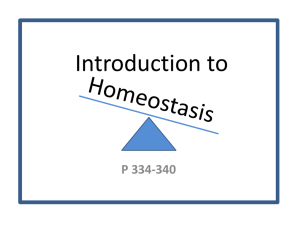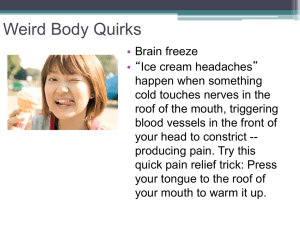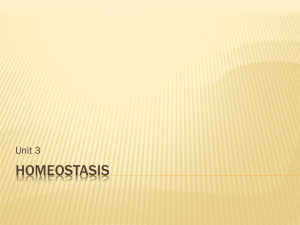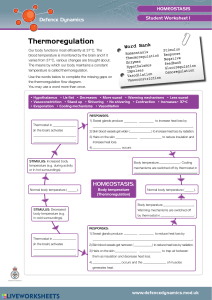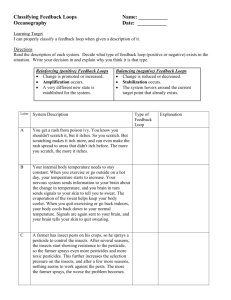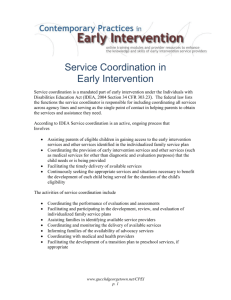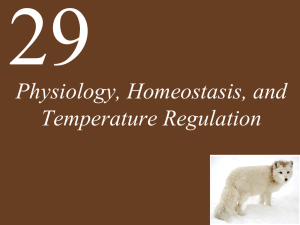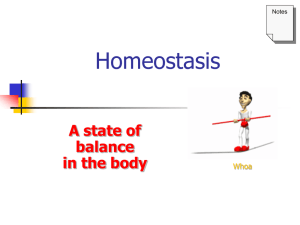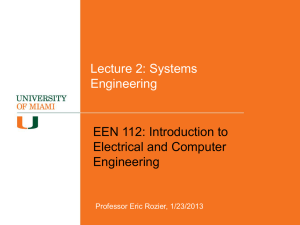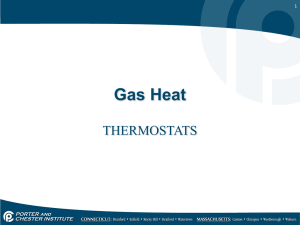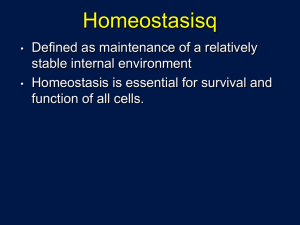Homeostasis & Thermoregulation
advertisement
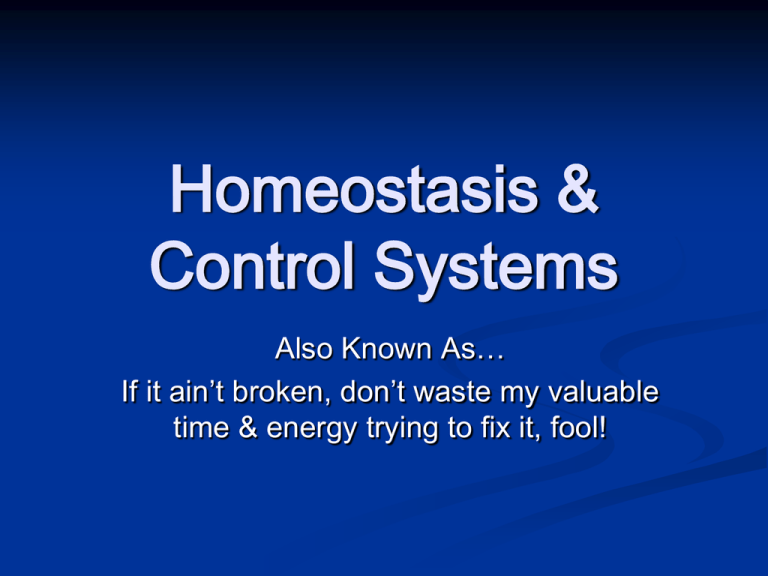
Homeostasis & Control Systems Also Known As… If it ain’t broken, don’t waste my valuable time & energy trying to fix it, fool! What is “homeostasis”, homie? • • • • • Homeostasis is the process by which the body maintains a constant internal environment despite changes in the external environment. The stable internal state that is kept in place is known as “dynamic equilibrium”. Homios = Similar Stasis = Standing Still The system requires a series of monitors, coordinating centres and regulators. These pieces are usually found as part of a negative feedback system. The body may also use a positive feedback system but these occasions are uncommon. Negative Feedback • • • • Negative feedback is a process by which a mechanism/process is activated to restore conditions to their original state. Note – Your body only operates these systems when something is wrong; if all is OK, then nothing is done. There are three parts to any negative feedback system – the monitor, coordinating centre and regulator. How does it work – it’s pretty easy actually… 1. 2. 3. Monitors in the body sense a change in the body that is outside of the acceptable range. They send a report to the coordinating centre (usually the brain). Coordinating centre devises an appropriate response in order to correct the problem and get the body back to “normal”. Coordinating centre sends signal to regulator on how to take action to solve the problem at hand. Signal is sent as long as problem exists. When problem has been relieved – the system stops and goes back into monitor mode. Negative Feedback in the Home? • • • • • Negative feedback can be likened to your home’s heating system. Temperature too high…Thermometer (monitor) senses increase in temperature. Signal sent to thermostat (coordinating centre) and thermostat says we better cool it down. Thermostat tells air conditioner (regulator) to start pumping in the cold air. Once house is cooled…system rests – why waste the energy? Negative feedback in the home? • • • • • • What if the temperature is too low? Thermometer senses that it is too cold and sends signal to thermostat. Thermostat figures it is time to turn up the heat. Thermostat tells furnace to get going and heat the place up. Once temperature is back up to normal levels, the system rests – why waste the energy? Saving energy is important to any energy being like yourself… Positive Feedback? • • • Positive feedback systems are not as common an are more proactive instead of reactive because they move the body out of its normal comfort zone. A good example is the process of birth. Progesterone levels are made to drop significantly – this makes the uterus start small contractions. These small contractions trigger the release of oxytocin which amplifies the strength of the contractions – the baby is pushed out. FIN Thermoregulation Also known as… Why do students complain when the room is too hot or too cold when their own bodies are gonna look after them anyways!!! Thermoregulation • • • Thermoregulation is the maintaining of a stable body temperature. This is necessary for the cells to function properly because the “rock star” proteins might decide to lose it if the room is not just right! The brain is the monitor and coordinating centre in this process is the hypothalamus – a part of the brain that is in the centre of the head and lies below the thalamus but above the pituitary gland. Response to Heat Stress • • • • • What happens when the body gets too hot? The brain senses the increase in temperature and sends a signal to hypothalamus which tells sweat glands to start sweating and blood vessels near the surface of the skin to dilate (open wide). Evaporation of sweat cools the body – blow across the back of your hand…Now lick the back of your hand and blow across it. Your spit is evaporating (as sweat would) and it is cooling you down. Wider blood vessels means more blood to skin surface which is cooler. Blood cools and is sent back to the core of body to help lower temperature. Do not spit on yourself when it is hot out – it won’t help you win with the ladies (or guys)! Response to Cold Stress • • • • • • What happens when the body gets too cold? The brain senses the drop in temperature and sends a signal to the hypothalamus to do something. The hypothalamus sends a signal to the muscles to contract rapidly and a signal to the blood vessels near the skin to constrict (become smaller in diameter). Rapid muscle contraction builds up heat – it’s like a mini workout. The smaller blood vessels reduces blood flow to the skin where the cold is and therefore less blood gets cooled and sent back to the core of the body. When the body is back to normal, the process stops.
